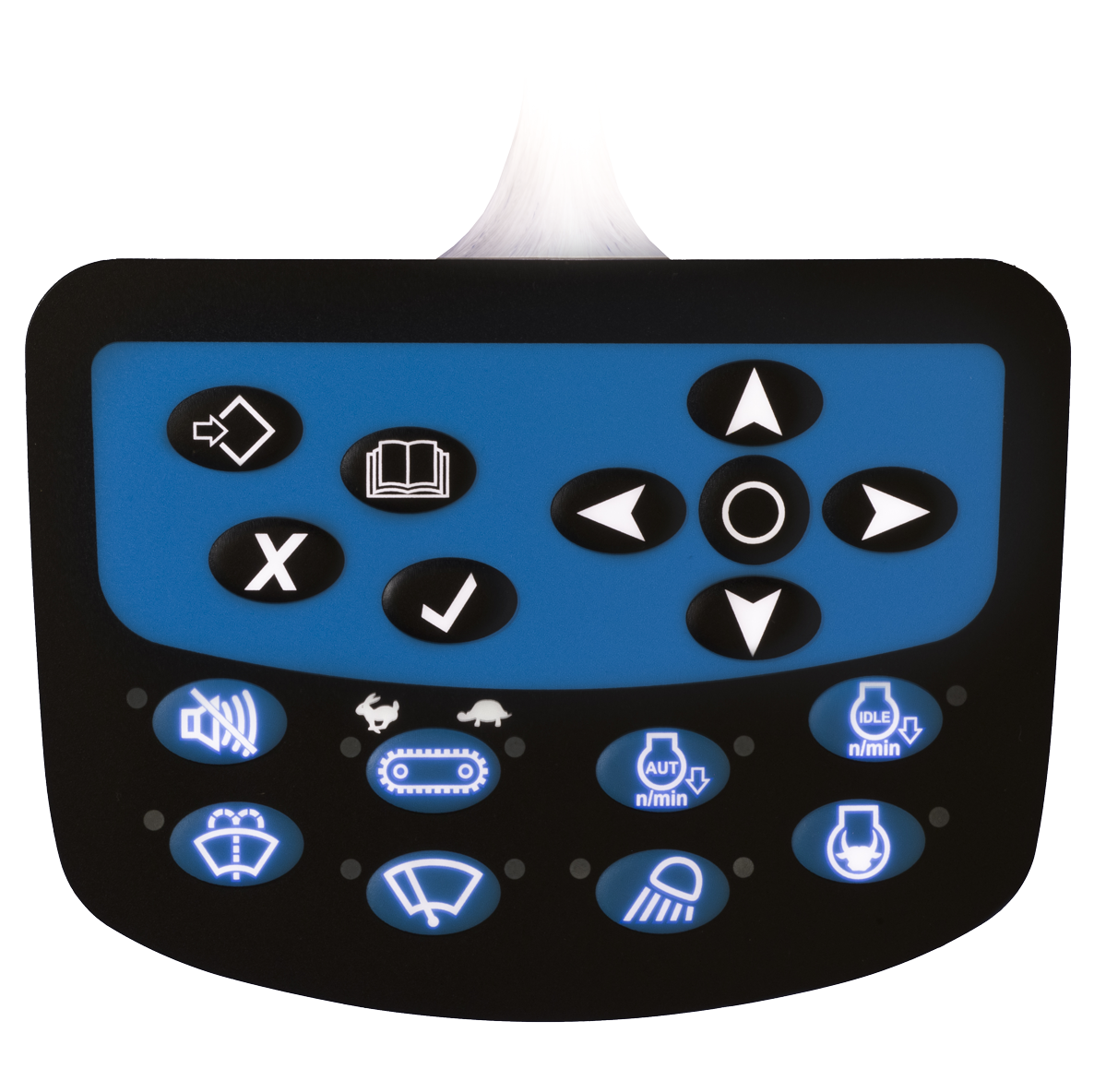The Reason Membrane Switches Are a Popular Choice for Healthcare Equipment
Why Membrane Layer Switches Are Vital for Sturdy Control Systems
Membrane buttons play a crucial function in making sure the toughness and dependability of control systems throughout numerous markets. Their special building and construction permits them to endure challenging environmental factors such as moisture, temperature level extremes, and physical wear. This resilience not only prolongs the life-span of the systems they serve but also lessens upkeep needs. As we explore the multifaceted advantages of membrane buttons, it becomes noticeable that their importance transcends plain performance, affecting user experience and functional performance. What additional ramifications do these attributes hold for the future of control system style?
Overview of Membrane Switches
Membrane layer buttons are functional and trusted parts commonly used in numerous electronic control systems. These buttons include several layers, consisting of a graphic overlay, a spacer layer, and a printed circuit layer. The graphic overlay provides both practical and aesthetic style, while the spacer layer guarantees that the buttons are activated just when pressed. The published circuit layer has conductive traces that finish an electric circuit when the membrane is pressed, allowing the gadget to reply to individual inputs.
Membrane layer buttons are usually favored in applications calling for a compact and lightweight design, making them excellent for portable gadgets, clinical devices, and industrial equipment. They can be customized to meet specific user requirements and can incorporate numerous features such as backlighting, responsive feedback, and numerous shades. Membrane layer buttons are immune to dirt, moisture, and impurities, making them ideal for atmospheres where sturdiness is vital.
Advantages of Longevity
In many applications, the durability of membrane layer switches offers considerable advantages that enhance their total performance and dependability. These buttons are developed to hold up against rough environments, making them excellent for usage sought after conditions such as high moisture, extreme temperature levels, and direct exposure to chemicals. Their robust construction aids to protect against damage from physical impact, guaranteeing durable functionality and minimizing the need for frequent substitutes.
In addition, membrane layer buttons are resistant to use and tear, which is crucial in applications where constant communication takes place. This sturdiness translates to reduce maintenance costs, as organizations take advantage of minimized downtime and less solution disruptions. In addition, the encapsulated style of membrane layer switches protects inner elements from dirt and dampness ingress, additional adding to their life expectancy.
An additional benefit is their capability to keep regular efficiency over time. With a high tolerance for mechanical stress and anxiety, these switches maintain their tactile comments and electrical stability, guaranteeing customer fulfillment. Inevitably, the sturdiness of membrane layer changes not just boosts functional performance however likewise fosters self-confidence in their dependability, making them a favored option for control systems throughout numerous markets.
Applications in Different Industries
Long lasting control systems using membrane layer buttons locate comprehensive applications throughout a variety of sectors, each taking advantage of the unique attributes these switches supply. In the clinical field, membrane layer switches are important for devices such as person screens and diagnostic devices, where integrity and ease of cleaning are extremely important. Their resistance to dampness and impurities guarantees they preserve performance in sterile environments.
The vehicle sector leverages membrane layer switches for dashboard controls and infotainment systems, where they supply sleek, inconspicuous interfaces that improve see post individual experience. These switches are likewise created to stand up to extreme conditions, consisting of exposure to extreme temperature levels and vibrations.
In commercial settings, membrane layer buttons are commonly utilized in machinery control panels, offering responsive responses and resilience necessary for high-usage applications. Their capability to stand up to chemicals makes them appropriate for making atmospheres where spills and contaminants are frequent.

Customer electronic devices, such as kitchen devices and push-button controls, additionally use membrane switches for their versatility and cost-effectiveness. On the whole, the flexibility and robust nature of membrane layer changes make them essential throughout various markets, ensuring effective procedure and durability in control systems.
Style and Visual Appeal
While capability is vital, the layout and aesthetic charm of control systems outfitted with membrane switches play an essential function in user involvement and overall experience (membrane switch). The visual layout of these buttons can considerably affect individual understanding and communication. A well-designed membrane button improves the beauty of the tool, making it a lot more enticing to individuals and fostering a connection between the individual and the product
Membrane switches over provide a large amount of adaptability in design, allowing manufacturers to tailor graphics, colors, and textures to straighten with brand identification and product appearances. Making use of vivid colors and unique patterns can attract attention, while responsive responses can reinforce the customer's communication with the tool. In addition, the ability to integrate LED indications and backlighting right into the membrane switch style supplies both practical and aesthetic benefits, enhancing exposure and use in different environments.

Enhancing User Experience

Furthermore, my company membrane layer buttons can be personalized to integrate graphical interfaces, improving use by presenting details in a clear and user-friendly fashion (membrane switch). This personalization can consist of icons, tags, and color coding that guide individuals through complicated functionalities with ease. In addition, their adaptability permits assimilation in numerous settings, making sure constant performance whether in industrial equipment or customer electronic devices
The resilience of membrane buttons additionally plays an essential duty in customer experience. By standing up to harsh problems and expanded use, these switches reduce the likelihood of system failings, therefore promoting reliability and customer self-confidence. Eventually, the strategic usage of membrane layer changes not just boosts capability yet also dramatically improves customer interaction with control systems, making them an indispensable part in modern-day design.
Conclusion
